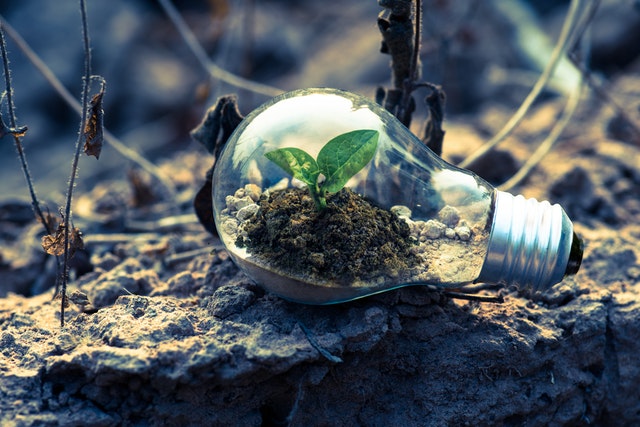Introduction
In the stratosphere, there is a profound layer, which is called the ozone layer. It is around the Earth, and the layer is full of ozone. Ozone is an exceptional sort of oxygen. Ozone is made up of three molecules of oxygen as opposed to the usual two oxygen particles (Mastromonaco, Gårdfeldt, Jourdain, Abrahamsson, Granfors, Ahnoff & Jacobi, (2016). The ozone layer assimilates about 99 per cent of the Sun’s ultraviolet light, which in any case would harm exposed living things on Earth (Cao, Platt, & Gutheil, 2016). Concerns that the increased UV radiation which is caused due to depletion of the ozone layer leads to a big threat for the life on Earth. It can cause skin problems, and many other diseases in people and also other ecological problems. But, the latest proof is that ozone depletion is recovering or slowed down (Chen, Quéléver, Fung, Kesti, Rissanen, Bäck, & Kulmala, 2018). On the other hand, in metrological regions over Antarctica, the ozone layer is essentially lessened, particularly during the spring season. This has caused the ozone holes that allude to the regions of lowered ozone layers
Discussion
Causes of ozone layer depletion
Exhaustion of ozone occurs when chlorofluorocarbons (CFCs) and halo-gases are released into the climate (Tokarek, Brownsey, Jordan, Garner, Assad, & Osthoff, 2017). These gases cause synthetic reactions that break the ozone atoms, reducing the capacity of ozone absorbing ultraviolet rays. The main reason for the depletion of the ozone layer is human behaviour or human activity, specifically, the chemicals containing chlorine and bromine which are made by humans. Substances, which cause destroy ozone have stayed and will stay in the climate for many years (Thompson, Shepson, Liao, Huey, Cantrell, Flocke, & Orlando, 2017). This shows that the harmful chemical that is exposed to the climate for the past 80 or 90 years is still reaching towards the atmosphere, which is why they will contribute to destroying ozone. The ozone layer has already been depleted in two regions of this Earth. One of them is in the middle latitude, such as over Australia, the ozone layer is dissipated and this has caused the way in for ultraviolet radiation reaching the earth. It is evaluated that 5-9% of the ozone layer has been damaged, which increases the risk of being harmed because of the almost direct exposure of ultraviolet radiation (Zuev, Zueva, & Savelieva, 2017).
Another cause of depletion of the ozone layer is global warming. Because of global warming and the greenhouse effect, more heat or warmth is trapped in the troposphere. The troposphere is a layer that is found underneath the stratosphere. As the ozone is in the stratosphere so the heat can’t reach the troposphere and it stays cold, as the healing of the ozone layer needs an extreme amount of heat so that is how it leads to the depletion. There is another thing that plays a backhanded role in the demolition of the ozone layer, which is volcanic eruptions. When a volcano has erupted, it emits a huge amount of different particles and aerosols, and these particles create a surface that allows chemical reactions to take place on it and this can cause damage to the ozone layer (Falk, & Sinnhuber, 2018).
Effects of ozone depletion
One of the most dangerous and more likely to harm life on earth is the increased level of ultraviolet radiation. These radiations can affect people’s lives, as it leads to many diseases in the human body, immune system suppression, and eye damage (Cao, Wang, Mao, Grosshans, & Cao, 2016). Ozone depletion can harm marine life on Earth since it can cause harm to the growth of plankton, which is consumed by many sea creatures. Ozone layer depletion causes the environmental change which affects the growth of plants and crop yields on the earth. An expansion in ultraviolet rays can cause littler leaves, reduce the growth of plant development, and makes the quality of crops less effective, and all of this can affect the food chain of humans (Schuch, dos Santos, Lipinski, Peres, dos Santos, Cechin, & Silva Loreto, 2015).
A few years before, NASA announced that the ozone hole is getting weaker because of the warmth of the stratosphere, but now recent theories claim that the ozone layer’s depletion is recovering and getting better (Bais, McKenzie, Bernhard, Aucamp, Ilyas, Madronich, & Tourpali, 2015). The man-made compounds, chlorine, and bromine that caused the ozone layer’s destruction are expected to disappear by around the 21st century. These compounds are slowly vanishing from the stratosphere, and this is all happening through a natural process. It is internationally decided to control the usage and production of substances that can cause harm to the ozone layer. Many countries have started working on it, such as controlling the production of harmful substances, using advanced technology for vehicles that is less harmful to the environment.
Conclusion
We, humans, contribute to ozone exhaustion through our day by day behaviour, such as using the different vehicle that excludes smoke and it spreads in the environment. The barometrical research revealed that the ozone layer was getting weak or being exhausted because of the chemicals discharged by the companies. We make greenhouse gases emitted, which are harmful to the ozone layer. We produce many toxic chemicals in factories and industries that can cause ozone layer depletion. The ozone layer is expected to be completely recovered by the 2060s, according to the UNEP. This is going to take a lot of time but, it is going to be fully healed and that will cause a great impact on the world.




